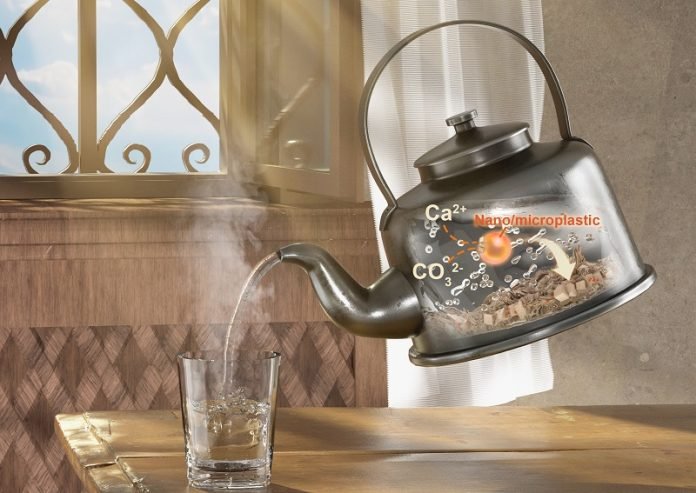
In today’s world, tiny plastic particles, known as nano- and microplastics, are found almost everywhere – in our water, soil, and even the air we breathe.
These tiny invaders can be smaller than a speck of dust or as big as a sesame seed. While the full impact of these plastics on our health is still being studied, concerns are growing about their presence in our drinking water.
However, scientists have stumbled upon a surprisingly simple method that could make our water safer to drink: just boil it.
A recent study published in Environmental Science & Technology Letters reveals that boiling tap water, especially if it contains calcium (like the water in many of our homes does), can remove nearly 90% of these plastic particles.
This finding is a big deal because it offers an easy and affordable solution for making our drinking water cleaner.
The idea came about when researchers, led by Zhanjun Li and Eddy Zeng, decided to investigate if there was a simple way to tackle the problem of plastics in drinking water.
They took samples of tap water from Guangzhou, China, and added different amounts of nano- and microplastics to them. After boiling the water for five minutes and letting it cool, they checked to see how much plastic was left floating around.
What they found was pretty exciting. Boiling water that’s hard (which means it’s rich in minerals like calcium) naturally leads to the formation of a chalky substance called limescale, or calcium carbonate.
During the boiling process, this substance forms crystals that trap the plastic particles. The researchers discovered that as the water gets hotter and these crystals start to form, they grab onto the plastics and wrap around them.
According to Zeng, these plastic-trapping crystals build up over time, similar to the limescale we might find in our kettles or on our taps.
And just like limescale, they can be cleaned off, taking the trapped plastics with them. For any remaining crystals floating in the water, a simple kitchen filter – like the one you might use for coffee – can catch them.
The effectiveness of this method depends on how hard the water is. In water samples with a higher calcium content (300 milligrams per liter), up to 90% of the plastic particles were removed after boiling.
But even in softer water, with less calcium (below 60 milligrams per liter), boiling managed to eliminate about 25% of the plastics.
This discovery is a game-changer because it’s a method that almost anyone can use at home, without needing expensive equipment.
It’s as easy as making a cup of tea or coffee. Boiling your tap water could be a simple step towards reducing the amount of plastic you consume daily. In a world where microplastics are becoming more and more prevalent, finding effective ways to minimize our exposure is crucial.
Thanks to this study, we now have one more tool in our arsenal to protect ourselves and our families.



